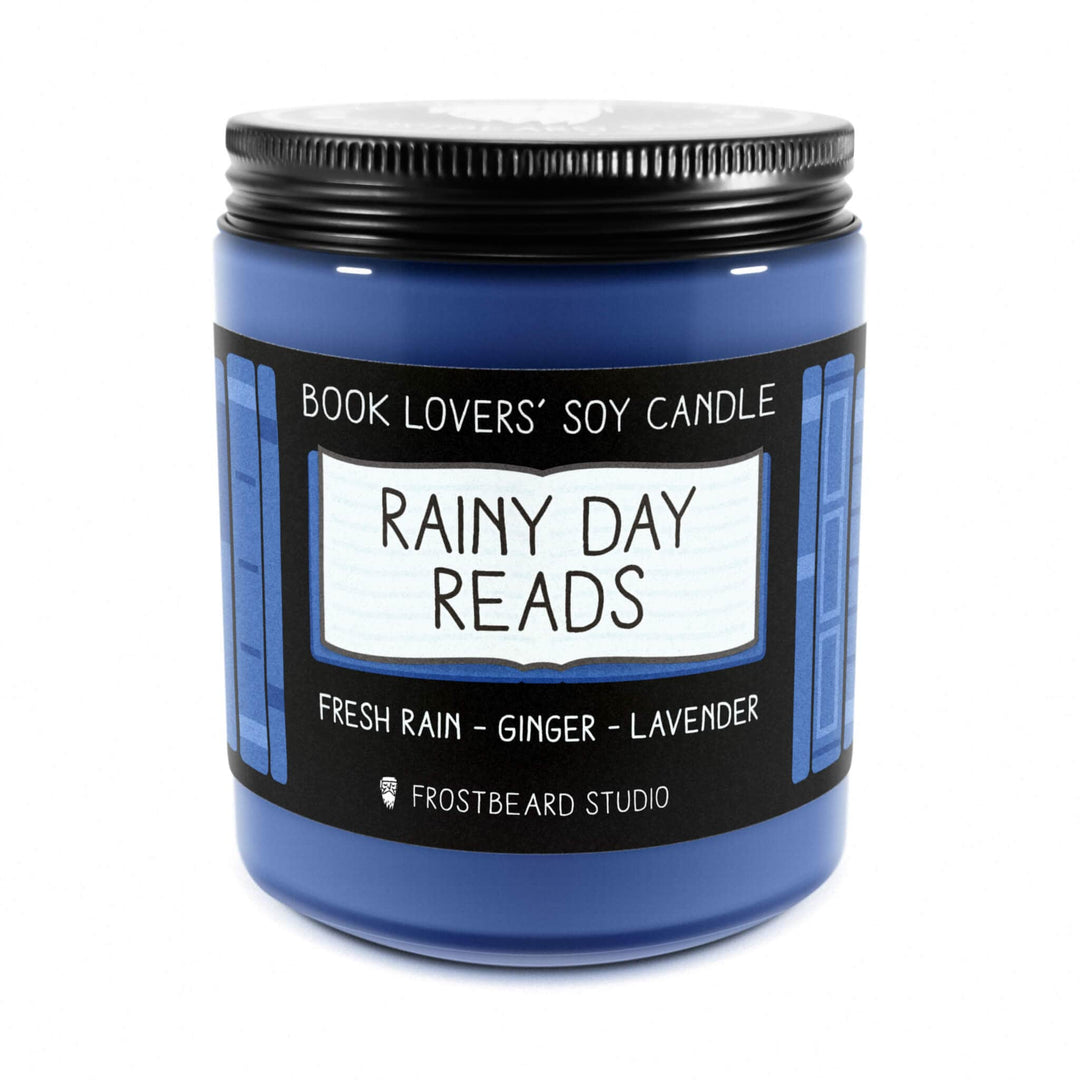50 Timeless and Unforgettable Book Covers of All Time
When searching for the best book covers, it's clear that an unforgettable cover is more than just an attractive front to a story; it encapsulates the essence of the book, inviting readers into its world before they even turn the first page. This introductory guide aims to illuminate why book covers play a crucial role in a reader's selection process, often being the first interaction we have with a book. In a sense, every book cover holds a promise, a glimpse into the adventure or knowledge contained within its pages.
Here are a few unforgettable book covers to get you started: - The Great Gatsby by F. Scott Fitzgerald - To Kill a Mockingbird by Harper Lee - 1984 by George Orwell - The Catcher in the Rye by J.D. Salinger - Dune by Frank Herbert
Judging books by their covers is not just a metaphor; it's a literal action that every reader undertakes, consciously or subconsciously. The best book covers capture the imagination, hint at the storytelling brilliance that lies within, and stand out in a crowded marketplace. They weave together imagery, typography, and color to create a visceral response. Whether it's the dark allure of a mystery novel or the bright, imaginative cover of a fantasy epic, the art of the book cover is in its ability to speak volumes with a single image.
The importance of book covers has only intensified. With millions of books available with a click, a standout cover can mean the difference between a book being noticed or overlooked. As we explore further, we'll delve into the evolution of book cover design, iconic book covers that have left a lasting impact, and how these elements enhance the reading experience — especially when paired with the cozy ambiance created by a Frostbeard Studio candle.

The Evolution of Book Cover Design
Early Book Covers
In the past, book covers were more about protection than aesthetics. They were made from wood, leather, or cloth, serving mainly to shield the pages inside. The concept of book design as we know it was non-existent; books were functional items for the educated elite, not objects of art or marketing tools.
Modern Design Trends
As literacy rates increased and printing technology advanced, the book cover evolved from a simple protective casing to an important element of the book's identity and appeal. The 20th century saw a significant shift with the introduction of dust jackets, which provided a canvas for art and information about the book and its author. This era brought us iconic covers such as The Great Gatsby with its hauntingly vivid eyes above a glittering cityscape, which remains one of the best book covers for encapsulating the essence of the story within.
Today, the trends in book cover design reflect a wide range of styles, from minimalist designs to complex digital art, showcasing the book's genre and tone at a glance. Typography has taken center stage, with creative use of fonts and text placement adding to the visual appeal. The use of bold colors, contrasting palettes, and thematic imagery helps these covers stand out in a crowded market.
Digital Influence
The rise of digital books has further transformed cover design. E-books and online marketplaces require covers that catch the eye even when viewed as small thumbnails. This digital shift emphasizes simplicity and clarity in design, ensuring that a cover can be effective across various platforms and devices. Despite the smaller real estate, the essence of effective cover design remains the same: to intrigue and invite the reader into the book.
The evolution of book cover design is a testament to the book's journey from a mere container of information to a curated experience that begins with the cover itself. The fusion of traditional design elements with digital innovation will continue to redefine what makes the best book covers stand out. Whether through the tactile feel of a paperback or the glowing display of an e-reader, a well-designed cover is a reader's first step into the story's world—a step made all the more inviting with the flicker of a Frostbeard Studio candle nearby, enhancing the sensory experience of diving into a new book.
Moving on, let's explore iconic book covers through the ages and how their designs have captivated readers and left a lasting impact on our collective memory.
Iconic Book Covers Through the Ages
When we talk about iconic book covers, we're diving into a world where art meets literature in a way that sticks with us, sometimes long after we've turned the last page. These covers aren't just protective layers; they're gateways to stories that have touched millions. Let's explore a few standout examples.
The Great Gatsby

F. Scott Fitzgerald's masterpiece, The Great Gatsby, sports a cover that's as celebrated as the novel itself. The original cover art by Francis Cugat, featuring a dark blue night sky with lights beaming over a cityscape and sad, floating eyes above a glowing, carnival-esque scene, captures the essence of the 1920s Jazz Age and the hollow pursuit of the American Dream. This imagery has become synonymous with Fitzgerald's critique of American society, making it one of the best book covers in literary history.
To Kill a Mockingbird
Harper Lee's To Kill a Mockingbird is another example where the cover plays a significant role in setting the tone. The tree, with its roots firmly in the ground, and the child-like drawing evoke themes of innocence, growth, and the moral fight against racial injustice. The simplicity of the design contrasts with the complexity of the novel's themes, inviting readers into Scout Finch's world with a sense of curiosity and empathy.
1984

George Orwell's 1984 has seen numerous covers over the years, but one of the most iconic is the edition designed by Shepard Fairey. The bold red title against a dystopian, industrial backdrop immediately sets a tone of surveillance, control, and rebellion. The cover art for 1984 perfectly encapsulates the book's exploration of totalitarianism, making it instantly recognizable.
The Catcher in the Rye
J.D. Salinger's The Catcher in the Rye features a cover that's as enigmatic as the novel's protagonist, Holden Caulfield. The carousel horse, often seen in editions of the book, symbolizes childhood innocence and the main character's desire to protect it. This simple, yet profound imagery invites readers into Holden's conflicted world, making it a memorable entry in the history of book cover design.
These covers show us how the best book designs encapsulate the heart of the story within. They're not just about being eye-catching; they're about making a promise to the reader—that the story they're about to dive into is worth their time and emotional investment. As we move to the next section, we'll delve into how genres influence cover design and how some covers have become iconic within their specific categories. Whether illuminated by the soft glow of a Frostbeard Studio candle or the backlight of an e-reader, these covers have one thing in common: they invite us into worlds beyond our imagination with just a single glance.
Best Book Covers by Genre
The world of book covers is as diverse as the stories they encase. Each genre brings its own flavor, setting the tone for the adventure or knowledge within. Let's explore some standout examples across various genres, showcasing how design elements come together to create memorable and enticing book covers.
Fiction
The Night Circus by Erin Morgenstern features a cover that perfectly captures the magical realism of the story. Black and white with touches of red, the cover draws readers into a mystical world of a nocturnal circus that appears without warning. The use of stark contrasts and a sense of mystery makes it unforgettable.
The Goldfinch by Donna Tartt presents a cover that is simple yet profound. Featuring a tiny, yet detailed, image of the painting that plays a central role in the novel, set against a black background, it speaks volumes about the beauty and tragedy intertwined in the story.
Non-Fiction
The Wealth of Nations by Adam Smith, though an older publication, has seen various covers through the years. Modern editions often opt for covers that blend vintage with contemporary, using classic typography and imagery to hint at the economic discourses inside.
Sapiens by Yuval Noah Harari uses a minimalistic approach, with an impactful visual of a human head evolving from an ape to a modern man. The simplicity of the design belies the complex exploration of humankind's history within its pages.
Science Fiction & Fantasy
Dune by Frank Herbert has had many covers over the decades, with some of the best featuring the vast, sandy dunes of the desert planet Arrakis. These covers transport the reader to the alien world that is central to the story's plot, using warm tones and futuristic fonts.
The Harry Potter Series by J.K. Rowling is known for its iconic covers, which vary significantly across different countries and editions. The original UK versions, with their colorful and detailed illustrations, capture the magic and adventure waiting for young readers and adults alike.
Mystery & Thriller
The Girl with the Dragon Tattoo by Stieg Larsson features a cover that's as dark and enigmatic as the story itself. The shadowy, icy landscape combined with the mysterious dragon tattoo gives a hint of the thrilling and complex narrative that lies within.
Gone Girl by Gillian Flynn uses bold lettering and contrasting colors to create a sense of suspense and intrigue. The cover is simple, yet the use of the disappearing title cleverly hints at the story's central mystery.
Children's Books
Where the Wild Things Are by Maurice Sendak is as beloved for its cover as it is for its story. Featuring one of the wild creatures that the protagonist, Max, encounters, it promises a journey into the imagination of a child.
The Very Hungry Caterpillar by Eric Carle is recognized instantly by its distinctive cover. Bright colors and the iconic image of the caterpillar eating through a leaf not only attract the attention of young readers but also hint at the transformational journey within.
Each of these covers not only stands out in its genre but also transcends it, capturing the hearts of readers across the world. They prove that a well-designed cover is not just an introduction to the story but an integral part of the reading experience. Remember that the art and science of book cover design play a crucial role in bringing stories to life, making them an essential aspect of the literary world.
The Art and Science of Book Cover Design
Creating a book cover is not just about making it look good. It's about telling a story before the reader even opens the book. Let's break down the key elements: Typography, Imagery, Color Psychology, and Target Audience.
Typography
The font choice on a book cover speaks volumes. It sets the tone and hints at the genre. A thriller might use bold, imposing letters to evoke suspense, while a romance novel could opt for elegant, flowing script. The goal is to match the typography with the book's mood, making it an instant signal to potential readers about what lies within.
Imagery
A picture is worth a thousand words, especially on a book cover. Imagery can be literal, showing characters or scenes from the book, or abstract, evoking the book's themes or emotions. The key is to create intrigue. For instance, the shadowy figures on the cover of The Girl with the Dragon Tattoo promise mystery and darkness, compelling readers to dive into the story.
Color Psychology
Colors have a powerful impact on our emotions and decisions. Bright red can signal danger or passion, making it a popular choice for both romance and thriller genres. Blues and greens often evoke calmness and can be perfect for self-help or literary fiction. The use of color on a book cover can attract the right reader by aligning with their expectations and emotions.
Target Audience
Knowing your audience is crucial in book cover design. A cover that appeals to young adults will be markedly different from one aimed at business professionals. Factors like imagery, color, and typography must all be tailored to the interests, preferences, and browsing habits of the book's intended readership.
In Summary, the art and science of book cover design are about much more than aesthetics. It's a careful blend of psychology, marketing, and graphic design, all aimed at drawing in the right reader. A great cover not only stands out on the shelf but also starts the reader's journey into the book, setting the tone for the adventure that lies ahead.
As we delve into how to find and work with a book cover designer, keep these elements in mind. The right designer will understand the importance of each and help you create a cover that captures the essence of your book and appeals to your target audience.
How to Find and Work with a Book Cover Designer
Finding the right book cover designer is like searching for a treasure. It requires patience, research, and knowing where to look. Here’s how you can find and collaborate with a designer to create a cover that makes your book irresistible.
Research and Identify Designers
Start with research. Look at books in your genre and note the covers that catch your eye. Who designed them? Often, you can find this information in the book’s acknowledgments or by a quick online search.
Visit designer portfolios. Many designers have their work displayed online. This gives you a sense of their style and if it matches what you’re envisioning for your book.
Don’t shy away from asking for recommendations. Reach out to other authors or industry professionals. They can provide valuable insights and may introduce you to talented designers.
Freelance Websites
Freelance platforms like Upwork, Fiverr, and Freelancer are treasure troves for finding book cover designers. You can:
- Post your project and let designers come to you.
- Browse profiles and portfolios to find a designer whose style aligns with your vision.
- Read reviews from other clients to gauge reliability and quality.
Communication is key. Clearly describe what you’re looking for and discuss your project’s specifics to ensure both parties understand the expectations.
Design Marketplaces
Design marketplaces such as 99designs or DesignCrowd offer a unique approach. You can:
- Host a design contest, where multiple designers submit their ideas based on your brief. Then, you pick the one you like best.
- Explore pre-made covers. Some marketplaces and designers offer high-quality, ready-made covers that can be customized for your book.
This method allows you to see a variety of styles and concepts before making a decision.
Working with Your Designer
Once you’ve found your designer, here are some tips to ensure a smooth collaboration:
-
Be Clear About Your Vision: Provide a detailed brief about your book’s genre, themes, and what you envision for the cover. Feel free to share examples of covers you like.
-
Feedback is Vital: Constructive feedback helps your designer understand what you’re looking for and make necessary adjustments.
-
Trust Their Expertise: While it’s important to communicate your vision, also be open to your designer’s suggestions. They have experience in what works and what doesn’t in book cover design.
-
Discuss the Details: Make sure you understand the scope of work, revisions included, timelines, and payment terms before starting the project.
A great book cover is a collaboration between you and your designer. With the right approach, you can create a cover that stands out and truly represents your book.
Consider how a well-designed cover complements the reading experience, perhaps even enhancing it when paired with the right atmosphere—like the warm glow of a Frostbeard Studio candle.
Best Book Cover Makers and Design Tools
In the journey of self-publishing, creating a book cover that captures the essence of your story is crucial. Luckily, you don't have to navigate this path alone. There are several tools and platforms designed to help you design a cover that not only looks professional but also stands out on the shelf. Let's explore some of the best book cover makers and design tools available.
Cover Design Studio
Cover Design Studio offers a straightforward solution for authors looking for a professional book cover without the hassle of hiring a designer. With a range of templates that cater to various genres, this tool allows you to customize your cover to fit your book’s unique identity. The templates are easy to use, ensuring that even those with minimal design experience can create a cover that looks both appealing and professional.
The Book Cover Designer
The Book Cover Designer is a marketplace where authors can browse through thousands of pre-made covers across multiple genres. Each cover is unique and once purchased, is removed from the marketplace to ensure that your book stands out. This platform is perfect for authors who want a high-quality cover quickly and at a fixed price. You can search by genre, keywords, or by specific designers, making it easy to find a cover that resonates with your story.
Ebook Launch
Ebook Launch offers both pre-made and custom book cover design services, catering to authors who are looking for a more personalized touch. Their team of professional designers works closely with you to bring your vision to life, ensuring that the final cover meets your expectations. Ebook Launch is ideal for authors who are looking for a hassle-free experience with the assurance of quality and uniqueness in their book cover design.
Selecting the right tool or service for your book cover design can have a significant impact on your book's success. A compelling cover not only attracts readers but also conveys the tone and essence of your story. Whether you choose a DIY tool like Cover Design Studio, a marketplace like The Book Cover Designer, or a custom design service like Ebook Launch, make sure it aligns with your vision and goals for your book.
As we transition from the nuts and bolts of design to the frequently asked questions about book covers, the cover is your book’s first impression. When a book is often judged by its cover, investing time and resources into creating the best possible front for your story is invaluable. With the right cover, your book will not only capture the attention of potential readers but also create an enduring visual identity that complements the reading experience, especially when paired with the ambient light of a Frostbeard Studio candle.
Frequently Asked Questions about Book Covers
Which book has the most beautiful cover?
It's tough to pick just one. Beauty is in the eye of the beholder, after all. However, some covers have become iconic over time due to their stunning visuals and design innovation. Classics like The Great Gatsby with its original celestial blue cover or modern masterpieces like The Night Circus, known for its enchanting and intricate design, often top the lists. The most beautiful cover for you is the one that speaks to your taste and connects with you on a personal level.
What is the best book cover maker?
There are several great tools out there for creating book covers, especially if you're going the DIY route. Canva is popular for its user-friendly interface and a wide range of templates. Adobe Spark and Book Brush are also favorites among indie authors and publishers for their flexibility and extensive design options. Each has its strengths, so the best book cover maker is the one that fits your specific needs, skill level, and aesthetic preferences.
How do I find a good book cover designer?
Finding a good book cover designer can seem daunting, but it's all about knowing where to look and what to look for. Start by checking out freelance websites like Upwork or Fiverr, where you can browse portfolios and find designers with styles that resonate with your vision. Design marketplaces and forums dedicated to book publishing can also be goldmines for discovering talented designers. When you find a designer you like, don't hesitate to reach out and ask questions about their process, rates, and availability. Communication is key to ensuring your vision comes to life just the way you want it.
When searching for the perfect book cover design, keep in mind the importance of matching the cover's vibe to the content of your book. A great cover is more than just pretty; it's a visual summary of your story that invites readers to dive into your world. And once you've nailed that perfect cover, imagine how it will look beside the warm glow of a Frostbeard Studio candle, enhancing the ambiance as you or your readers delve into the adventure within the pages.
Conclusion
The journey through book covers brings us to a significant insight: the power of a great cover cannot be underestimated. It's the first interaction a reader has with a book, acting as a gateway to the stories and ideas nestled within the pages. A compelling cover not only grabs attention but also sets the tone for the reading experience.
But what elevates this experience even further? The ambiance in which we immerse ourselves as we turn each page. This is where Frostbeard Studio candles come into play, adding an extra layer of sensory pleasure to our reading moments. Imagine settling into your favorite reading nook, a book with a captivating cover in one hand, and the flicker of a candle casting soft light around you. The scent of the candle, inspired by the theme of your book, envelops you, transporting you even deeper into the story's world.
A great cover makes a book stand out on a shelf, but a Frostbeard Studio candle enhances the atmosphere, making the act of reading not just a visual journey but a fully immersive experience. Whether it's the smell of ancient libraries, the crisp scent of adventure, or the comforting aroma of a fantasy world, these candles are designed to complement the essence of your book, turning reading time into an event.
In conclusion, as we celebrate the artistry and impact of the best book covers, let's not forget the role of our reading environment in enriching the overall experience. A beautifully designed cover draws us in, but the warm glow and fragrance of a candle can transform reading from a simple activity into a cherished ritual. Together, they create a perfect harmony, enhancing every moment spent within the pages of a great book.









